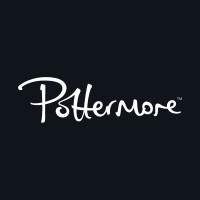
In the wizarding world, there are some fantastic beasts that are clearly magical (you couldn’t mistake a dragon for a puppy, could you?) but some that could double-up for an innocent housecat. Just ask Mrs Figg...
Kneazles

Which brings us on to our first doppelganger: the Kneazle. According to the Fantastic Beasts and Where to Find Them textbook, Kneazles are cat-like in appearance, but with a little bit more edge than the average feline. They are known for their intellect, their independence, and their savvy ways of spotting when someone is untrustworthy. Also, to add to the confusion, Kneazles can breed with regular cats. Indeed, Crookshanks, is half-Kneazle. All of this makes Kneazles the perfect pet for Mrs Figg, who lives in between the magical world and the Muggle world as a Squib.
Crups

Much like Kneazles, Crups could pass for normal, domesticated doggos – if it wasn’t for their forked tails. Apart from that, they look just like Jack Russell terriers. As such, wizards and witches must acquire a license to own a Crup, to show that they can control their pet in Muggle-inhabited areas, and have their tails removed with a painless Severing Charm so Muggles are definitely none the wiser.
Mackled Malaclaw
If partaking in a lovely stroll on a rocky coastline, watch out for the Mackled Malaclaw – a magical creature that looks a bit like a lobster, but far is more sinister. Indeed, if one were to enjoy a Mackled Malaclaw as a decadent seafood dinner option – a green rash is sure to follow. We’ll just have chips, thanks.
Knarl

Aw, a lovely little hedgehog, a Muggle may foolishly think – when actually they could have just walked into a Knarl, which looks basically the same as the beloved, spiky mammal. The main difference between a Knarl and a hedgehog seems to be general decorum: if a Muggle leaves food out for a Knarl, it’ll mercilessly wreck your garden in gratitude. In the wizarding world, at least Knarl quills are useful for magical purposes – Fred and George have been known to use them for their Weasleys’ Wizard Wheezes products. Knarls and hedgehogs are so similar, they are often used in O.W.L. exams at Hogwarts, where students have to try and spot the difference.
Jobberknoll

To the untrained eye, a Jobberknoll is simply a blue, speckled bird. It could be an exciting moment for a David Attenborough-type to find one, thinking they’ve found a new species... but the game is up quite quickly when a Jobberknoll dies, where it lets out a horrific scream made up of every sound it has ever heard regurgitated backwards. A Muggle would be sure to drop their camera in horror.
Kelpie

Sometimes a quite blatantly fantastical creature has found its way into Muggle folklore – although even then, it’s not quite what they think. Take the Kelpie, a clever shapeshifting water demon that takes many forms in order to lure the unwary into the bottom of whatever lake or river its frequenting. The largest Kelpie takes the form of a large sea serpent that dwells in Loch Ness, Scotland – so you can only imagine what the Muggles managed to piece together, there...
It would explain a lot about why the fabled Loch Ness Monster only appears on very sporadic occasions – as the cheeky Kelpie can simply turn into an otter if Muggles approach.


